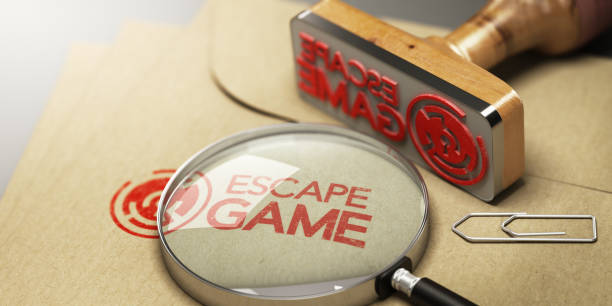If you are a gaming enthusiast, you might have come across the term escape rooms or puzzle rooms. This is especially familiar if you are interested in live-action or recreational games. Escape room games provide an immersive experience of a live-action escape room experience. This genre of live gaming is inspired by video games, survival horror, and common puzzle games.
This genre of escape games has taken over the world, and rightfully so. There are approximately 50,000 escape room games all around the world right now. Most well-established cities have some escape room games available for the people. Clue Chase, Basement escape rooms, Room Berlin, Upside escape games, etc., are some well-known escape room locations in the world.
To create an amazing escape experience, there is a lot of behind-the-scenes effort involved that most players don’t realize. This article will give you a sneak peek of some of the hidden mechanisms that take an escape experience to the next level!
The various mechanics are hidden behind an amazing escape room experience.
As stated before, escape rooms or puzzle rooms are live-action (now, virtual experiences exist as well) escape games where the players form a group and voluntarily enter a themed locked room. Now, they must figure out clues and solve puzzles to get the door code. They might have to complete certain room scenario-related missions as well. All these must be achieved within a set time limit, usually 60 minutes. The most popular escape room themes are mystery, thriller, horror, science fiction, etc.
Now, a variety of mechanisms and technologies are involved in creating such an immersive experience. The escape game mechanism involves everything from the scenario, setting, room layout, technology used, and anything else that might enhance the game experience.
-
Scenario
In an escape room, you have to start with the scenario. The scenario or storyline will be aligned with the chosen theme. The scenarios need to be exciting and must have unique selling points to make the game popular.
-
Room Layout
The room layout involves the decoration and setting based on the storyline. The setting should not be too complex for rookie players but not so easy that it is not fun for game enthusiasts. But puzzling rooms or rooms involving horror elements and other special effects will always be a hit.
-
Game Process
In an escape room game, you must make use of your wit and brain power to crack the codes. You must think outside the box to avoid the room’s trickery. You must cooperate with your team and divide the work. Time management is also an essential element of escape rooms.
-
The technology used in the experience
Technology is a huge part of an escape room. Puzzles might be given through any electronic device. The room lock could be automatic. The electricity and light especially impact the way we view the room. Digital clocks and stopwatches help in keeping track of the time. Special effects and VR technology enhance the escape room experience as well.
-
Hidden clues and Hints
The escape room might try to create chaos by giving tricky clues or difficult riddles. The clues could be hidden anywhere. Even the most obvious place could be the actual location. Solving room tasks also gives some clues about the puzzles or how to solve them. In case the game gets too difficult, escape rooms provide the option of hints. You can ask for hints by signaling the game master through the surveillance camera inside the room.
Conclusion
Escape rooms are perfect for all kinds of events, from family outings, school trips, birthday celebrations, fun date locations, and even corporate outings. If you are yet to experience an escape room game, book a slot at any escape room in your city that might interest you!


